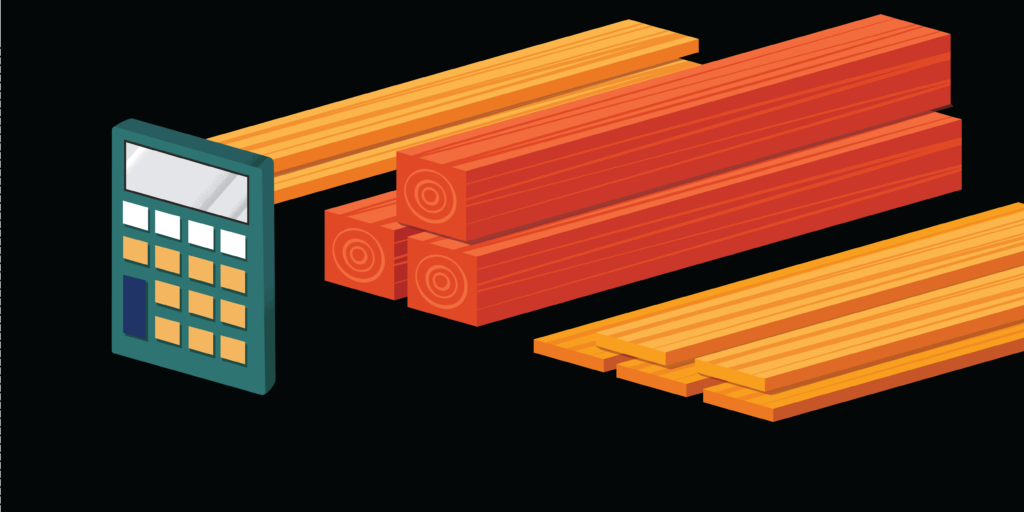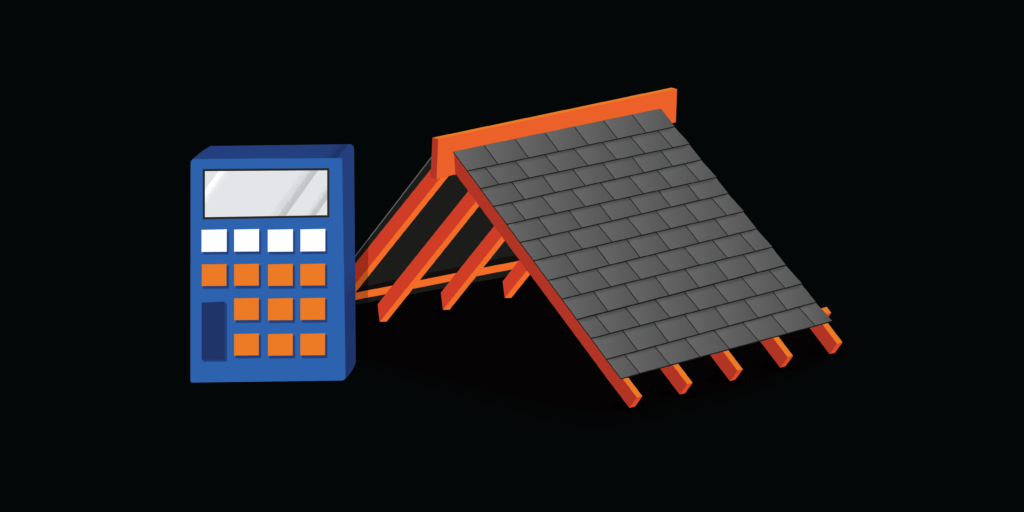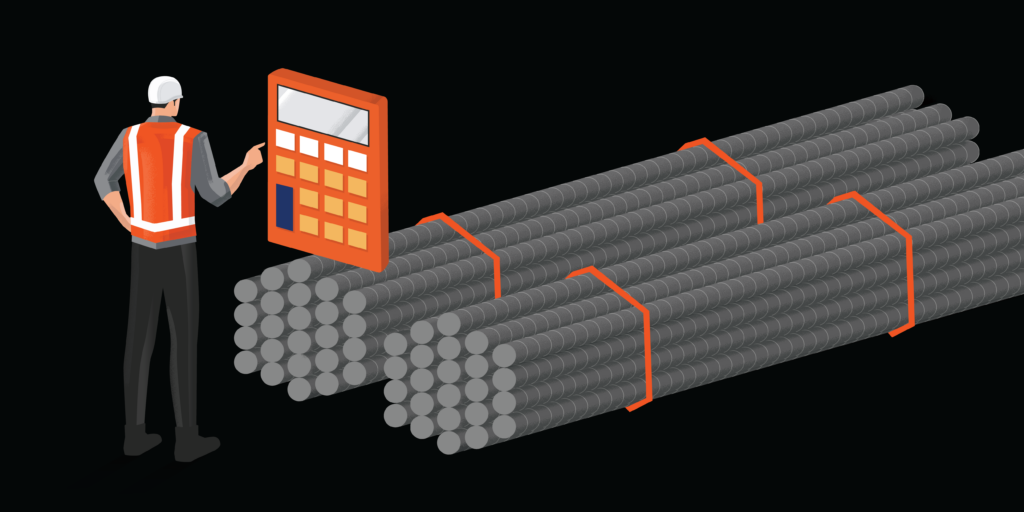— 4 min read
Asphalt Calculator
Last Updated Jul 11, 2024
Last Updated Jul 11, 2024
Use the asphalt calculator to estimate the amount of material required for a paving project.
Table of contents
How to Estimate Asphalt
For any paving project, accurately estimating the amount of asphalt required is critical to ensure that projects are completed on time, within budget, and with minimal wastage. Given the costs associated with procuring materials, transport, and labor, miscalculations can lead to significant financial setbacks. Here's a step-by-step guide, complementing our new web calculator, to help contractors measure the space to be paved and account for various factors influencing the material requirements.
1. Evaluate the base.
If you're laying asphalt over an existing surface, evaluate its condition. A damaged or uneven base might require more asphalt for a smooth finish.
A gravel base will often need a thicker layer of asphalt than a solid concrete base, as it can shift or settle over time.
2. Measure the area.
Begin by measuring the length and width of the area. This is straightforward for rectangular spaces: Measure end to end and multiply the length by the width to get the area. For irregular shapes, consider breaking down the space into smaller rectangles or squares and summing up the areas of each.
Depth is crucial because asphalt is usually applied in layers. Typical depth ranges from 2 to 4 inches, depending on the traffic load the paved area will handle. High-traffic surfaces like parking lots may require a 6 to 8-inch pour. Note that depth also affects the compaction rate, as thicker layers compact more.
3. Calculate the volume.
Once you have the area (in square feet) and the depth (in inches), multiply these to obtain the volume in cubic feet. Convert the cubic feet to cubic yards by dividing by 27 (the number of cubic feet in a cubic yard).
For example, an area of 1,000 sq. ft. with a depth of 3 inches requires a volume of 2,500 cubic feet. This equates to about 92.59 cubic yards.
4. Account for compaction.
Asphalt compacted during the paving process often results in a reduction in volume. Generally, a compaction factor of about 10% is sufficient, but this can vary based on the specifics of the job and equipment used. Thus, it's essential to add this percentage to your initial calculation to ensure you order enough material.
Factors That Affect Asphalt Quantity
Traffic Considerations
The type and volume of traffic the paved area will handle can affect the depth and type of asphalt mix you need. Heavy vehicular traffic will necessitate a thicker layer and a more durable mix than areas that only experience foot traffic or light vehicles.
Climate and Seasonal Factors
The region's climate can influence the type of asphalt mix best suited for the job. Some mixes are formulated to resist high temperatures, while others are tailored for colder climates. Additionally, consider the season during which you're paving. Asphalt laid during colder months might need different specifications or considerations than during warmer periods.
Tack Coat and Other Materials
While primarily focused on asphalt, don't forget to account for the tack coat - a sticky adhesive applied between layers to ensure proper bonding. Depending on the project's specifics, you might also need other materials or modifiers to enhance the asphalt's performance.
Related: Concrete Calculators
Types of Asphalt Mixes
There are several different types or mixes of asphalt, depending on the intended use and application. The differences are found in the selection of added aggregates, as well as the temperature at which it is mixed.
Hot Mix Asphalt (HMA): This is the most common form of asphalt. It's made by heating the asphalt binder to decrease its viscosity and drying the aggregate to remove moisture from it before mixing the two together.
Warm Mix Asphalt (WMA): It is similar to HMA but is produced at a slightly lower temperature. This leads to fewer emissions and reduced fuel consumption.
Cold Mix Asphalt: Often used as a patching material to repair small potholes or cracks. This mixture is created without heating.
Porous Asphalt: Designed for water drainage. It’s commonly used in parking lots to help manage stormwater runoff.
Reclaimed Asphalt Pavement (RAP): Old asphalt pavements that have been removed can be crushed and recycled into this product, which can then be used to create new pavement.
Asphalt Concrete: A combination of asphalt cement and aggregates. Often what people refer to when they say "blacktop."
Was this article helpful?
Thank you for your submission.
100%
0%
You voted that this article was . Was this a mistake? If so, change your vote here.
Scroll less, learn more about construction.
Subscribe to The Blueprint, Procore’s construction newsletter, to get content from industry experts delivered straight to your inbox.
By clicking this button, you agree to our Privacy Notice and Terms of Service.
Categories:
Tags:
Written by
Jonny Finity
29 articles
Jonny Finity creates and manages educational content at Procore. In past roles, he worked for residential developers in Virginia and a commercial general contractor in Bar Harbor, Maine. Jonny holds a BBA in Financial Economics from James Madison University. After college, he spent two and a half years as a Peace Corps Volunteer in Kenya. He lives in New Orleans.
View profileExplore more helpful resources

Board Foot Calculator
Use the calculator to calculate the number of board feet in a piece of wood or lumber. What is a Board Foot? A board foot is a unit of volume,...

Roof Sheathing Calculator
Use the roof sheathing calculator to estimate the number of sheathing panels required to cover a roof. How to Calculate Roof Sheathing Requirements Estimating the correct number of roof sheathing...

Asphalt Shingle Calculator
Use the asphalt shingle calculator to estimate the amount of material required to cover a roof. How to Estimate Asphalt Shingle Needs This article will guide you on how to...

Rebar Calculator
Use the rebar calculator to estimate the amount of material required for a concrete pour or paving project. What is Rebar? Rebar beams are reinforced steel rods cut to various...